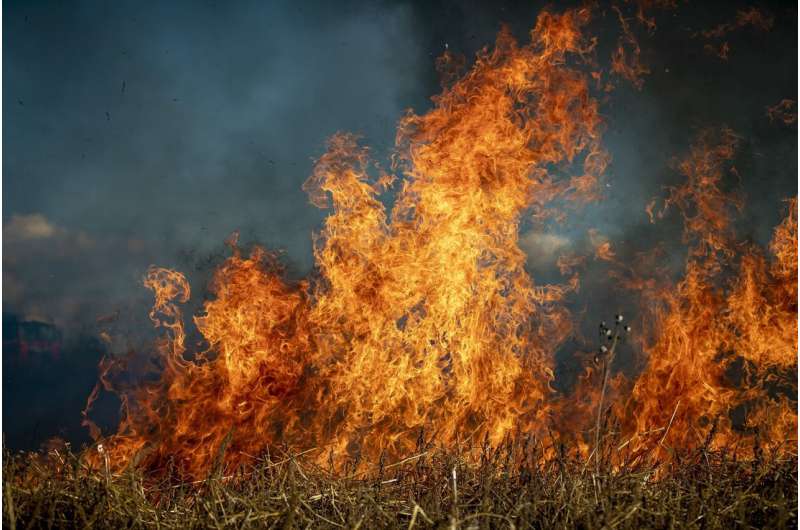This article has been reviewed according to Science X's editorial process and policies. Editors have highlighted the following attributes while ensuring the content's credibility:
fact-checked
reputable news agency
proofread
Colorado has more than 332,000 homes susceptible to wildfire damage, report says

A wet year may have provided a mental reprieve, but Colorado continues to have more homes at risk from wildfires than any state besides California, according to the Wildfire Risk Report from CoreLogic.
And within Colorado, metro Denver and Colorado Springs, not communities high up in the mountains, are where the largest property losses are most likely to occur.
CoreLogic, which provides risk estimates to insurers, utilities and local governments, estimates that 332,716 homes in the state have a moderate, high or very high risk of damage from wildfires. Rebuilding those homes, if they were destroyed, would cost an estimated $140.9 billion.
The only state with a higher wildfire exposure to its housing stock is California, with nearly 1.28 million homes at risk and an estimated replacement value of $760.8 billion. Texas has the third-highest wildfire risk ranking with 233,434 homes at risk and a reconstruction cost of $85.5 billion.
Although rural mountain communities have long dealt with forest fires, nearby urban areas are increasingly where the most severe losses are occurring. The fire that consumed Lahaina last week was the deadliest in recent U.S. history, costing 101 lives as of Tuesday and destroying $3.2 billion in property.
"There has been a lot of growth, especially in those Wildland Urban Interface areas. As we see the increase of population and development we will see that increase in total risk," said Jamie Knippen, senior product manager with CoreLogic.
In 2014, CoreLogic estimated Colorado had closer to 200,000 homes in the path of potential wildfires. But the number has increased substantially, with nearly half of the homes now located in five more heavily-populated Front Range metropolitan areas.
- Metro Denver has 69,284 homes at risk with an estimated replacement value of $32.6 billion.
- Colorado Springs has 51,321 homes at risk of wildfire damage with an estimated replacement value of $22.1 billion.
- Fort Collins has 14,352 homes at risk worth an estimated replacement value of $4.6 billion.
- Boulder has 9,754 homes at risk with an estimated replacement cost of $4.2 billion.
- Pueblo has 3,242 homes worth $1 billion at risk.
Metro Denver consists of six counties, while those other Colorado metro areas cover their entire counties. Homes on the western side of those counties are most at risk. But having forests and grasslands adjacent to densely populated areas can set the stage for "urban conflagrations."
The Waldo Canyon fire, after starting higher up in the mountains, reached into the Mountain Shadow neighborhood in Colorado Springs in 2012, destroying 347 homes. On Dec. 30, 2021, the Marshall fire, whipped by winds exceeding 100 mph, raced through Boulder County, destroying 1,084 homes and damaging another 149. Two people died in each fire.
Heavier moisture has meant fewer and less severe wildfires this year in Colorado and surrounding states, but wetter conditions are also creating more fuel to burn whenever drought conditions return, which climate scientists expect to happen due to higher levels of carbon dioxide in the atmosphere.
If CoreLogic is correct in its estimates, about 13% of the state's housing stock is vulnerable to wildfire damage, based on an estimated 2.45 million housing units counted in the state during the 2020 Census.
2023 MediaNews Group, Inc.
Distributed by Tribune Content Agency, LLC.



















